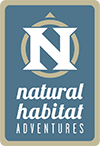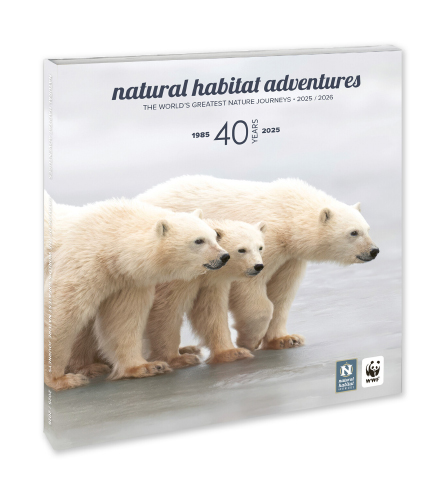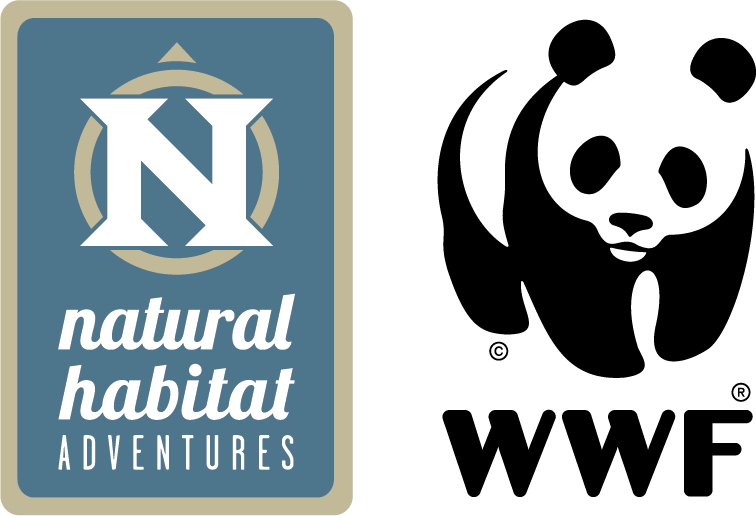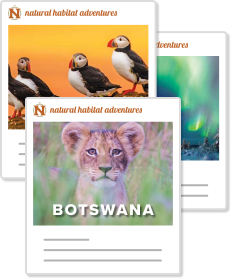Itinerary
Please note: Alternating trips run in the opposite direction, starting in Jackson and ending in Bozeman. All inclusions are the same.
Arrive in Bozeman, where you’re met at the airport and transferred to our 4-star hotel in the heart of the city's historic downtown. Bozeman offers a classic example of the Old West/New West dichotomy, which makes for street photography opportunities for those who arrive in advance of our welcome dinner. With a rich mining, trapping and ranching heritage, Bozeman boasts 40 individual properties on the National Register of Historic Places. It is also home to Montana State University and has a thriving economy built on growing tourism and tech sectors.
At this evening’s welcome dinner, meet your Photo Expedition Leader who will offer an overview of the adventure to come and answer questions about gear and photo opportunities. A professional photographer skilled at capturing high-quality images of the animals and landscapes of the Greater Yellowstone Ecosystem, your guide is also an expert naturalist whose understanding of wildlife behavior will be essential to getting the images you covet.
Day 2: Paradise Valley / Yellowstone National Park—Mammoth Hot Springs / Northern Range Wolf Tracking / Gardiner
Depart early this morning, traveling in specialty North American Safari Cruisers to follow the Lewis & Clark Trail over Bozeman Pass to the Yellowstone River. Today will be a primer into landscape and wildlife photography. While in transit, your Photo Expedition Leader will offer instruction on helpful skills for shooting Yellowstone in the winter: understanding focus, composition, white balance, and exposure.
We spend the morning in the Paradise Valley in search of eagles, mule deer and pronghorn antelope. The ragged heights of the Absaroka Range provide a dramatic backdrop for landscape photos. En route, look for wintering bighorn sheep in Gardiner River Canyon. We enter the park through the northern entrance at Gardiner, then continue to Mammoth Hot Springs. There's plenty of time to photograph the thermal activity as super-heated water flows over the white limestone terraces, which some observers describe as a "cave turned inside out."
Later this afternoon, we enter Yellowstone’s Northern Range, the best place in the park to search for wolves, and our first possible chance to capture photographs of them. More frequently, we spot coyotes, elk and bison against the snow-mantled landscape. As dusk fades, we return to Gardiner, just outside the park boundary, to spend two nights.
Day 3: Wolf Tracking in the Lamar Valley / Hartman Gallery Visit
We rise early this morning to reach the Lamar Valley at the break of day in hopes of spotting wolves. The broad glacial valley offers wide-open vistas of a sublime landscape. If wolves are present, they are likely to stand out against the snowy backdrop, although they are almost always seen at a distance. Our Photo Expedition Leaders carry high-powered spotting scopes on board our vehicles, and if we are fortunate to spy wolves, we'll have the opportunity to obtain images via digiscoping, with coaching from our Photo Expedition Leader. Other wildlife is abundant, and we're sure to come away with exhilarating images, which may include coyotes, elk and shaggy bison with heavy coats encrusted with ice.
During the day, we'll also stop in Silver Gate, just outside the park's northeast corner, for a presentation at the Hartman Gallery. Owner Dan Hartman is a renowned Yellowstone wildlife photographer and local naturalist whose wolf images are widely acclaimed. He'll share slides, insights and observations about wolf behavior gleaned from countless hours in their presence, as well as tips for pursuing photos of Yellowstone’s winter wildlife. Then, as the light wanes by mid-afternoon, we return to the Lamar Valley to turn our focus on wolf tracking again, knowing our chances to see them are best at dawn and dusk.
Day 4: Northern Range Wolf Tracking / Norris Geyser Basin / West Yellowstone
As dawn breaks over the snowy expanse of the Northern Range, we return once more in search of wolves. An onboard spotting scope is always at the ready, allowing us to observe wolf activity from a distance without disturbing their natural behavior. Many of our Expedition Leaders have worked for years with on-site researchers who track the packs daily, and together they provide us every opportunity to find these charismatic animals in their natural surroundings.
While we remain vigilant for elusive wolves, we have abundant opportunities to capture moose, bison, foxes and coyotes as they navigate the snow-covered terrain. With its soft, diffused light and mountainous backdrop, the valley offers a unique chance to create classic wildlife images like frost-covered bison plowing through snowdrifts and atmospheric landscape shots.
Leaving the Lamar Valley, we journey southwest to the Madison River, where winter’s frosty embrace transforms the landscape into a realm of stillness and mist. Snow-laden trees and crystalline waters offer the opportunity to experiment with light—or its absence—as we concentrate on composition and shutter speed. At Norris Geyser Basin, the surreal beauty of steaming, bubbling pools and their vibrant hues strike a stark contrast to the white expanse. Here, we work on freezing motion, capturing the dramatic interplay of heat and cold.
Day 5: Private Snowcoach Tour to Old Faithful
Yellowstone’s geysers are legendary, and today we’ll capture their magic as we explore via private snowcoach, with a special focus on the iconic Old Faithful. Pack your wide-angle lens to frame these towering natural wonders. From vast landscapes to intricate ice crystals forming in geothermal mist, we’ll experiment with composition, macro, and exposure against the vibrant colors of the mineral-laden crust.
Our day centers around Old Faithful, where your Photo Expedition Leader provides expert guidance and insights into the park’s geothermal wonders. Beyond the famous geyser, the Firehole River Basin boasts the highest density of geothermal features on Earth, offering stunning shots of geysers, hot springs, mud pots and fumaroles. The dynamic beauty of these geyser basins inspired early explorers and conservationists like Teddy Roosevelt. Winter adds its own allure as steam vents and bubbling mud attract wildlife, creating chances to photograph trumpeter swans, bald eagles, elk and bison.
Day 6: Yellowstone Private Snowcoach Tour—Wildlife Photography
Today we focus on high shutter speed and action shots as we hone skills we’ve been working on over the course of our time together. With the entire day dedicated to wildlife photography, we can practice the techniques that are unique to photographing winter scenes in Yellowstone and even push ourselves to experiment with novel approaches as we tour via our private snowcoach.
Our Photo Expedition Leader will determine our route depending on where wildlife sightings are best, but we are likely to spend more time along the Madison River and in little-visited Hayden Valley, whose rolling hills are home to herds of bison and the Wapiti wolf pack that established a presence here several years ago. With luck, we might see them in action as we transit the valley.
Day 7: Grizzly & Wolf Discovery Center / Grand Teton National Park / Jackson
After immersing ourselves in the secluded Yellowstone wilds, today we focus on portraiture, capturing close-ups of bears, wolves and other rescued wildlife at the Grizzly and Wolf Discovery Center, an educational facility near West Yellowstone. Your Photo Expedition Leader guides you through composition so that you may make portraits that best reflect the wild essence of these magnificent creatures. Working with horizontal and vertical orientation, you will have the opportunity to shoot images that encapsulate why these predators have become such powerful western icons.
Leaving West Yellowstone, we drive south to Grand Teton National Park, stopping along the way for our first views of the Teton spires. More great shots await as sunset casts alpenglow on the jagged range, providing an incomparable backdrop for wildlife such as elk, bighorn sheep and moose.
Day 8: Jackson Hole—National Elk Refuge
Our winter safari continues into Jackson Hole, the broad, open valley at the base of the Tetons, where we go in search of bighorn sheep, bald and golden eagles, coyotes, bison, mule deer, moose and elk.
A sleigh ride on the National Elk Refuge offers another opportunity to capture intimate wildlife shots. Established in 1912 to protect the habitat of one of North America’s largest elk herds, the refuge provides an unparalleled setting for photographing not only elk but also bighorn sheep, bald eagles and stunning mountain backdrops. The open sleigh offers unique low-angle perspectives, ideal for creating dynamic compositions with leading lines in the snow or the arresting contrast of elk against the white winter terrain. Experiment with depth of field to isolate subjects or use a wide-angle lens to emphasize the grandeur of the surrounding Tetons.
Day 9: Jackson / Depart
After breakfast, the day is yours to explore the Old West town of Jackson before you depart, as your schedule permits. Stop by Tom Mangelsen’s downtown gallery, where you’ll find his captivating collection of wildlife and landscape photography. A Jackson resident for more than 40 years, Mangelson’s images offer a masterclass in composition, storytelling and the beauty of nature. You’ll also find a wide range of other interesting subjects, from the iconic elk antler arches in the town square, made from found antlers that elk shed annually, to the western saddle barstools at the famous Million Dollar Cowboy Bar. A gondola ride up Snow King Mountain offers panoramic views over the town and Tetons beyond.

























